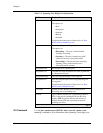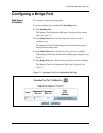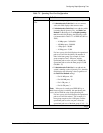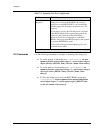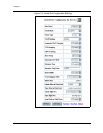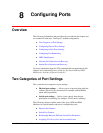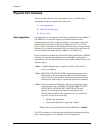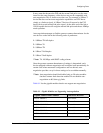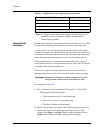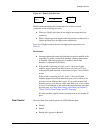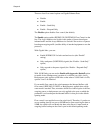
Document No. 10-300077, Issue 2 7-23
Configuring Rapid Spanning Tree
5. Enter the appropriate information in the following fields:
■ Spanning Tree Mode—Enable or disable Spanning Tree on this
port. If you click Disable, the port does not participate in Spanning
Tree.
■ Admin Point to Point Link—Specify whether this port is
connected to a shared LAN segment or a point-to-point LAN
segment. A point-to-point LAN segment is connected to exactly one
other bridge (normally with a direct cable between them). Only
point-to-point links and edge ports can rapidly transition to
forwarding state.
If you set this field to Auto, the switch automatically detects
whether the port is connected to a shared link or a point-to-point
link. Ports operating in half duplex are set to False, and ports
operating in full duplex are set to True. You can, however, manually
set the type of link. Options are:
— ForceTrue—Defines the port as connected to a point-to-point
link.
— ForceFalse—Defines the port as connected to a shared LAN
segment.
— Auto—Automatically detects whether the port is connected to a
shared link or a point-to-point link. If you select this setting, the
Oper Point to Point Link field displays the link type that is
detected.
■ Admin Edge Port—Specify whether this port is an edge port or a
nonedge port. An edge port is not connected to any other bridge.
Only edge ports and point-to-point links can rapidly transition to
forwarding state. Options are:
— edge-port—Defines the port as an edge port.
— non-edge-port—Defines the port as a nonedge port.
If you set this field to edge-port, the Oper Edge Port field is also
set to edge-port. However, if the port receives a BPDU, the Oper
Edge Port setting changes to non-edge-port. (To receive a BPDU,
the port must be connected to a bridge and thus is not an edge port.)
This field replaces the fast start feature in v5.x application software.
When you upgrade the software from v5.x to v6.0 or later, switch
ports for which fast start was enabled have Admin Edge Port set to
edge-port.




